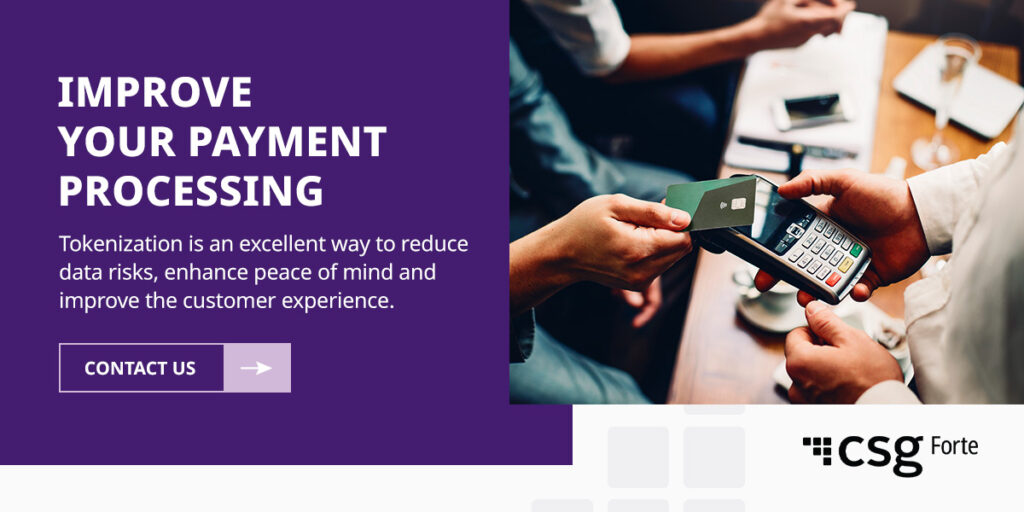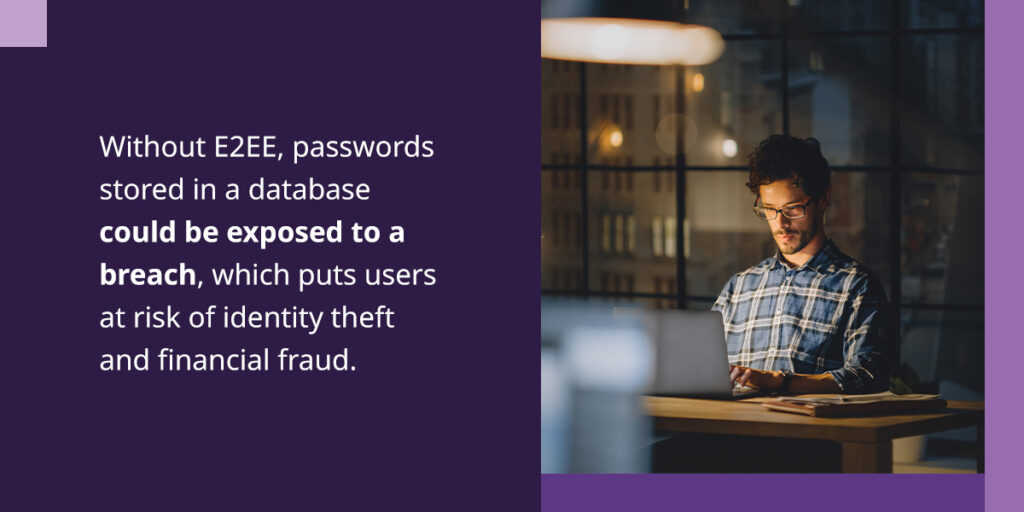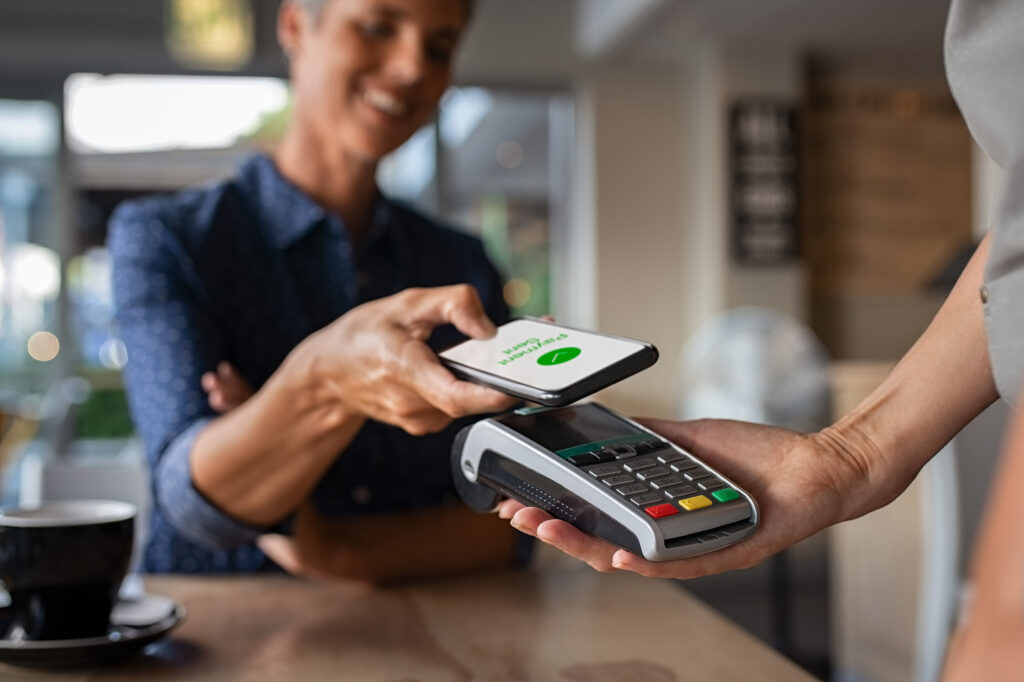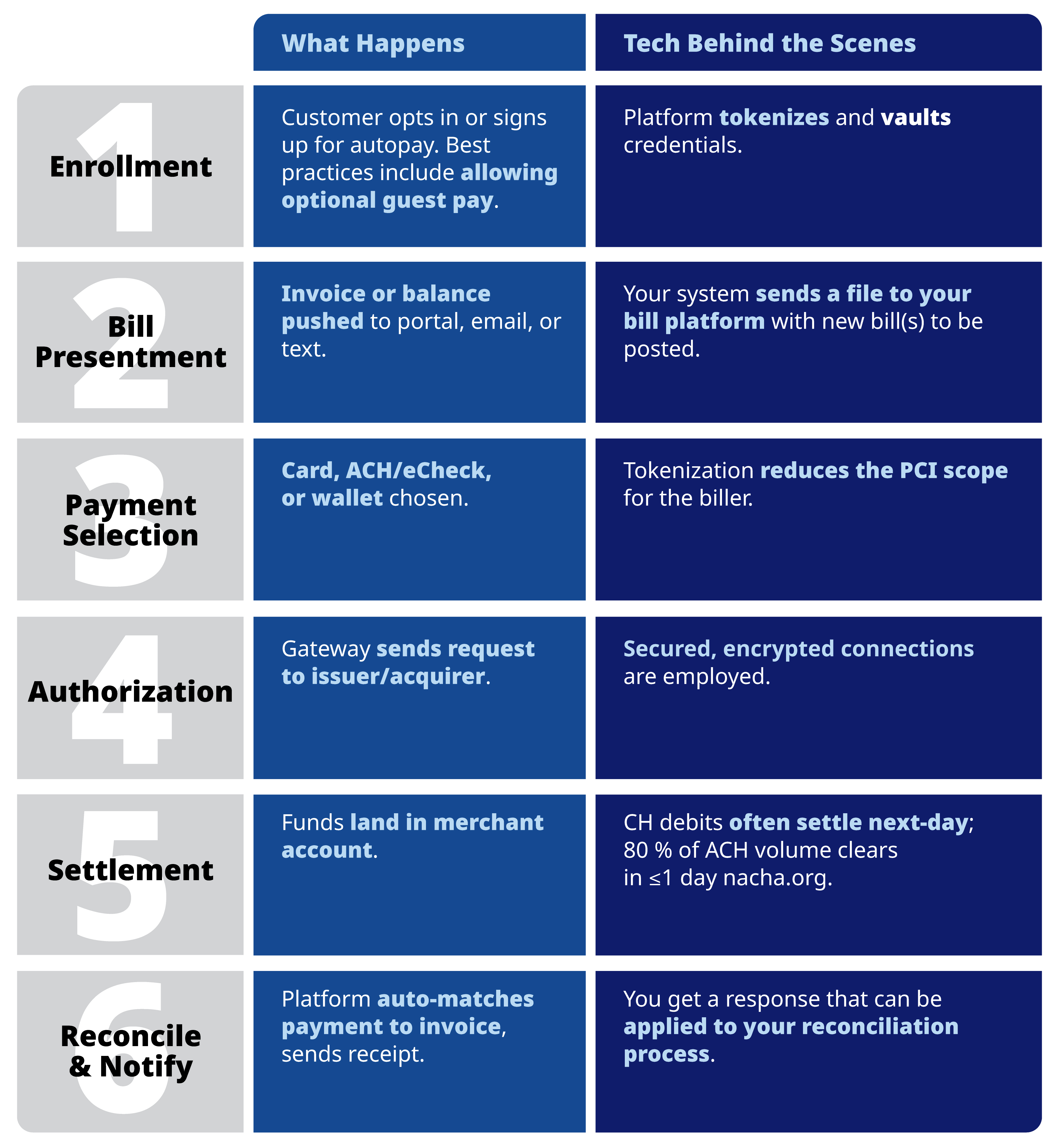What Is Tokenization in Payments?
Data breaches remain a top concern for consumers and businesses alike. Between phishing scams, ransomware attacks and hacked Wi-Fi networks, consumer data is facing more threats every day. In the United States, more than 60% of credit card holders have been victims of fraud, and more than half have experienced it multiple times. With millions of dollars and lives on the line, the need for data security is heightened.
One way businesses are protecting consumer information is through tokenization. This security strategy makes it nearly impossible for third parties to access sensitive cardholder information, and combining this strategy with other robust cybersecurity measures amplifies security efforts. Here, you can learn more about tokenization, including how it works and its benefits for your business and customers.
What Are Tokens?
Payment tokenization is a method of securing payment information like credit card numbers. This security strategy replaces sensitive information with what appears to be random characters or numbers. Rather than using and storing card information during transactions, systems use and store the random tokens.
This strategy keeps information secure because even if a malicious third party were to gain access to the token, the information would be encrypted, meaning the third party couldn’t read or make sense of it to determine the card information. Tokenization gives peace of mind to customers by reducing the likelihood of data breaches or fraud.
The transactional party generating the tokens, enforcing custody of the token-generating keys, retrieving the non-encrypted transactional information and operating the tech stack used in these operations is generally referred to as the “token vault.”
Tokens can take several formats, including:
- Nonpreserving: Nonpreserving formats replace sensitive information with random characters in a format different from the original. For example, a token for a nine-digit Social Security Number could appear in seven characters like “L$@9%0C” to ensure security.
- Format preserving: These tokens maintain the original information format but change the values randomly. Consider this credit card tokenization example—a card ending in 1234 could appear as 5678.
- Partial replacement: Some organizations leverage selective masking techniques for payment tokens. This method involves changing some of the information while leaving the rest in its original form. For example, a credit card of 1234 5678 9876 5432 could become 1234 WXYZ ABCD 5432. This method can be helpful if a merchant needs to verify information from a customer, such as the last four digits on their card.
How Does Payment Tokenization Work?
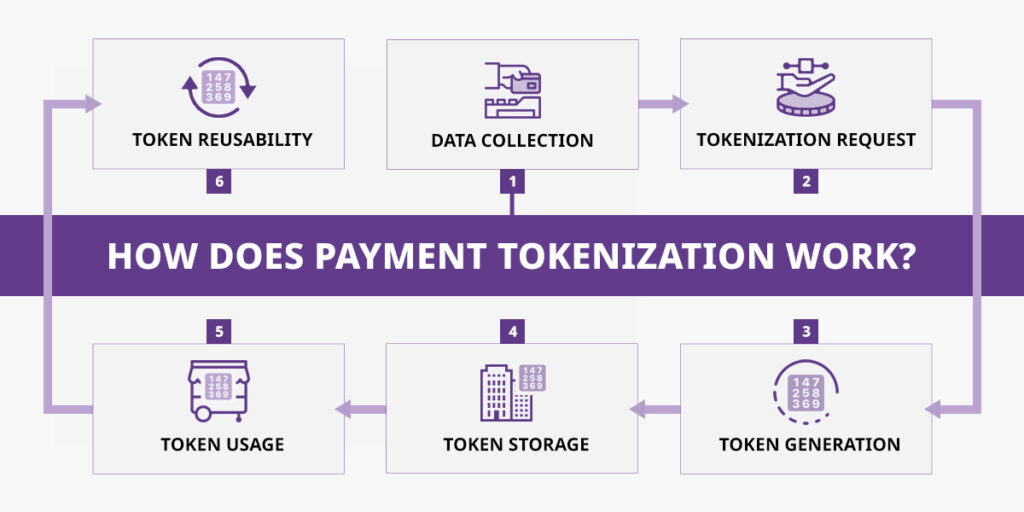
Payment gateway tokenization involves transforming data, storing the nonsensitive character equivalents and transmitting that data without exposing the original information. Generally, the process of tokenization happens over several stages:
- Data collection: The customer initiates a transaction and provides payment details to an organization.
- Tokenization request: The business sends the payment information to a payment processor or third-party vendor for tokenization.
- Token generation: Random characters and values replace the card information using a combination of encryption methods and algorithms.
- Token storage: The organization’s system stores the token, protecting the original information from unauthorized access.
- Token usage: The business sends the token to their secure vendor or payment processor for secure mapping to complete the transaction without exposing the card details.
- Token reusability: If a customer subscribes to recurring services, the system can reuse the same token to avoid collecting information again.
The Benefits of Payment Network Tokenization
One of the most obvious benefits of tokenization is enhancing security. With the increase in occurrence and the growing complexity of cyberattacks, businesses and customers need a secure way to complete transactions. Tokenization can reduce the risk of data breaches, allowing customers to shop with confidence and businesses to protect their assets and reputation. Other benefits of tokenization include:
- Meeting compliance standards: Tokenization helps you meet Payment Card Industry Data Security Standards (PCI-DSS) requirements. The PCI Security Standards Council created standards to ensure the security of all major card brand users, and service providers and merchants must demonstrate compliance to avoid fines and penalties.
- Increasing efficiency: You can increase payment efficiency with tokenization. Rather than requiring customers to input their card information every time they make a purchase, you can store their tokens for streamlined transactions.
- Controlling costs: Using advanced security techniques like tokenization allows businesses to secure payments while reducing the risk of data breaches and associated costs. Along with avoiding penalties and fines, organizations can prevent massive business losses, preserve customer trust and support their bottom line.
- Improving the customer experience: Providing a faster way to complete transactions and offering peace of mind to your customers improves their overall experience. Simplifying and streamlining contactless payment tokenization and online payment processes can create a stronger relationship with your customers. Maintaining this positive relationship with your customers can increase their brand loyalty and drive long-term satisfaction.
Layering Tokenization With Additional Security
While tokenization is a great way to secure payments and streamline processes, there are additional strategies you can implement to further protect your data and business. Additional security reduces the likelihood of data breaches and physical threats. Implement tools and strategies like:
- Encryption: Encryption is similar to tokenization. This approach uses algorithms to make information unreadable unless you have the right key to read it. Encryption is ideal for transmitting and storing unstructured data or large data batches. Creating a layered security strategy with encryption and tokenization can amplify your data storage and transmission security.
- Multifactor authentication (MFA): MFA requires users to input multiple forms of authentication. A common requirement is to input a password and then follow it with a one-time code that a system sends to the user’s phone number or email address. However, you can also use security elements like tokens and biometrics to suit your needs. This strategy enhances your overall security by ensuring authorized individuals are the only ones able to make changes or complete transactions.
- Security assessments: Conducting regular security assessments is the best way to ensure your security measures are up to date and capable of handling evolving threats. These assessments allow you to identify potential weaknesses and determine areas for improvement within your tokenization structure.
Improve Your Payment Processing
Tokenization is an excellent way to reduce data risks, enhance peace of mind and improve the customer experience. To embrace this advanced security strategy, you must find a service provider that can scale solutions to your needs and demonstrate the experience and flexibility to grow with your business.
That’s where we come in. With CSG Forte, you can find a cloud-based payments platform that simplifies payment processing, gives you data control and improves your operations. As your reliable payment tokenization service providers, our team members deliver holistic solutions while ensuring security.
We proudly support payment processing for all industries and businesses of any size. We leverage security measures, including tokenization, end-to-end encryption and payment pages, to keep your payment data safe every time. We also maintain essential compliance and possess payments industry and ACH securityy certifications. Ready to discover how CSG Forte can improve your payment processing? Get in touch with an expert.


